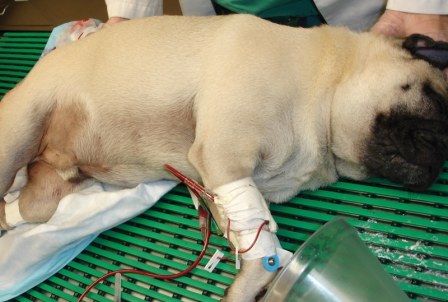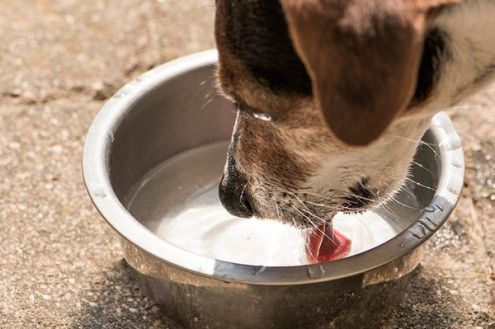It is important that pet owners remain vigilant about their pet’s health. As common as how heat stroke is common in humans, heat stroke can also happen to pets. Hence, it is vital that we, as pet owners recognise the different signs and/or symptoms our pet displays.
In addition, the warmer climate all year round, in tropical countries; it is a thing and pet owners should be cautious about. Heat stress and/or heat exhaustion in pets can lead to heat stroke. Heat stroke is a more serious condition than heat stress and heat exhaustion. These life-threatening heat related illnesses require timely treatment and can result in death if not.
In this article, we will discuss the causes of heat stroke, symptoms and treatment, as well as some measures to prevent heat stroke in pets.
About Heat Stroke — What Is It?
Heat stroke is when your pet’s body temperature exceeds the normal pet’s body temperature of 38 degree celsius. Like humans, cats and dogs are homeotherms — we can regulate our own body temperatures. However, unlike humans, pets have fewer sweat glands. Their sweat glands are located at their nose and paws.
Pets do pants to expel heat from their body by circulating air through their bodies to cool down. This form of expelling heat are more common in dogs than in cats.
They do not possess the same level of ability to regulate their body temperatures. Hence, it is important to take preventive measures, in an attempt to keep their temperatures within the normal range.
Causes Of Heat Stroke In Pets
Other than the hot and humid weather being the primary risk factor of heat stroke. Heat strokes are not unique to humans and can affect pets of all breeds, age and gender. There are many other risk factors that could also lead to heat stroke. Generally, the causes of heat stroke in both cats and dogs are similar; they are listed in the image below:

Some breeds of dogs are more susceptible to heat stroke due to their genes and biological properties. For instance, brachycephalic dog breeds such as bulldog, pug, shih tzu, boston terrier and more; they are more prone and sensitive to heat stresses and ultimately heat stroke due to their facial structure. Their facial structure does not allow them to breath and pant efficiently to cool themselves down.
Now that you as pet owners know the risk factors and causes of heat stroke, you might wonder: “What are some of the symptoms we should look out for?”
Symptoms Of Heat Stroke
It is important that pet owners identify the symptoms of heat stress, heat exhaustion and heat stroke. This is because pets cannot speak, hence they do not have the ability to verbally communicate their body discomfort.

Heat stress and heat exhaustion can worsen to become heat stroke in pets. In the worst case scenario, heat stroke can result in death even with comprehensive care. It is therefore, critical that timely care are provided once there are symptoms. The immediate consultation of your pet’s veterinarian is also advised should they be displaying severe signs of heat stroke.
How Can Heat Stroke Be Treated?
Treatment At The Veterinarian Clinic Or Hospital

It is especially vital to seek emergency medical care at the vet clinic or hospital should you suspect that your pet is suffering from heat stroke or showing severe signs relating to heat stroke.
While there are different procedures at different pet clinics and/or hospitals to treat heat stroke. The following are some possible treatments the vet will provide to help treat your pet:
- Intravenous (IV) fluids
- Mild sedation
- Low concentration oxygen therapy
During the treatment process, the vet will monitor your pet’s rectal temperature. The requirement for stopping most or all treatments would include observed recovery signs and body temperature within the normal range.
Should there be a need for emergency medical care at the vet clinic or hospital, the priority would be a safe, controlled reduction of your pet’s body temperature. In order to help them cool down, cool water would be poured over parts of their body. Alternatively, vets could utilise cool wet cloths. Placed on parts of their body and replaced continuously in time intervals to prevent heat retention in the cloths.
Treatment At Home

If your pet is not showing slight signs of heat stress, it is still important to take them to the veterinarian. Whilst travelling and waiting, the following actions could be taken to stabilise your pet’s condition.
- Move your pets to a shaded, cool spot, an air-conditioned room or turn on the fan.
- Offer cool fresh water.
- Help cool them down by wetting down their body with a cool wet cloth (replace them every few minutes to prevent retention of heat).
- Stop all physical activities should you be outdoors.
- Seek veterinary care.
How Can Heat Stroke Be Prevented?

‘Prevention is better than cure’. While there are treatments for heat stroke, it is always better to prevent heat stroke in your pets as it can be fatal. Listed below are some recommended actions to help prevent heat stroke in pets.
- Take your pets out for walks on cooler periods of the day or take shorter walks during hotter days. If possible, avoid taking walks with your pets on hot days.
- Avoid vigorous exercises and physical activities on hot days.
- Ensure that cool, clean and fresh water are available for your pets at all times.
- Avoid leaving your pet in the car even if the windows are left open.
- Do not leave your pet in an area without proper ventilation and air-conditioning.
- Provide your pets with a shaded resting spot or a cooling pet bed or mat.
- Brush your pet’s fur daily to prevent matted fur from trapping extra heat.
- Always observe your pets behavior and keep a lookout for signs of heat stroke.
- Seek immediate medical care should your pet display any symptoms of heat stroke.
If your pets are not drinking enough water, and you are pondering how you can encourage them to drink more, click on this link here to find out more!
